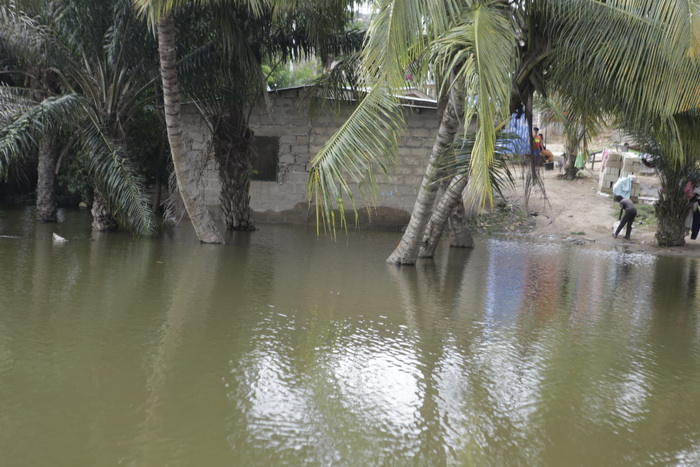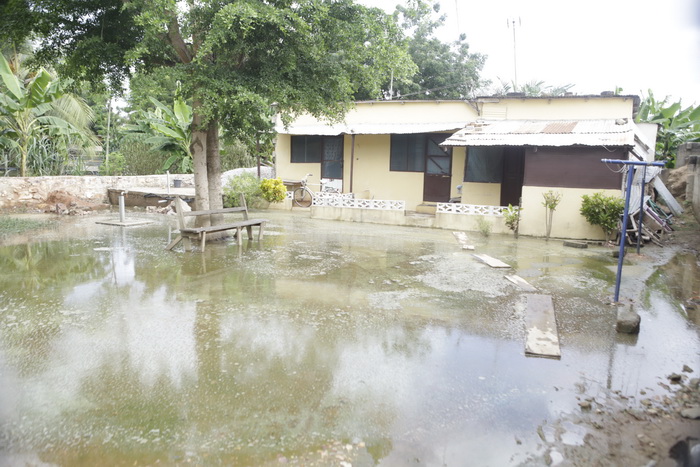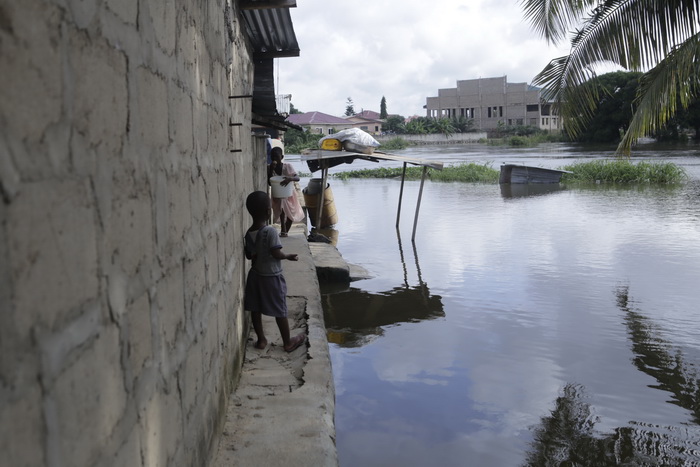During a visit to the affected areas yesterday, it was realised that some places were virtually inaccessible, while some occupants were busily scooping water from their rooms.
Annual ritual
The GWCL every year, with the onset of the rains, spills water from the dam to prevent damage to the facility as the water reaches its desired limit.
The dam is on the Densu River which supports the main water treatment plant that supplies about 80 per cent of the potable water to the entire city of Accra and its environs.

Affected residents
Some affected residents in Weija and Tetegu had to wade through the water which was at knee level, while four people were seen in a canoe at Tetegu in an attempt to cross over to one end of the community.
A resident at Weija Adankope, Madam Grace Quansah, told the Daily Graphic that for the past week, spilled water from the dam had rendered many people homeless but added that her house was not as badly affected as the other places.
She said unlike the previous year when she suffered the effect of the spillage, this year was different.
A landlady, Ms Christiana Avi, whose house was surrounded by the water but not flooded, said she had to elevate the entrance and seal other openings in the house to prevent the water from flowing to the compound.
Asked if her house was on a waterway, she responded in the negative and said, she did not build on a water course but rather some other people did, and that was affecting many other people,
Another resident whose room was completely flooded, Yaw Mafiko, blamed the landlord of the house for constructing the building without recourse to proper procedure.
He and the other tenants of the house were in a pensive mood when he spoke with the Daily Graphic.

GWCL
The Communications Manager of the GWCL, Mr Stanley Martey, told the Daily Graphic that residents were still suffering from the spillage which started three months ago because the water levels were still rising, coupled with the rains, making the inflows outstrip the outflows.
He added that the encroachment on the river course and the buffer zone had also contributed to the situation.

Previous experiences
In 2014 many homes at Glefe and Opetekwei were flooded, following spillage of the Weija dam and the enormity of the situation compelled residents to pack their belongings to safety.
The Communications Manager of the GWCL, Mr Stanley Martey, had consistently spoken on the matter of people affected by the spillage, saying that there was nothing the company could do for the residents living downstream since the safety of the dam was paramount.
“The dam is man-made and it can break at any time. And if that dam is to collapse now, it will wipe all those communities close to the dam within seconds and Greater Accra will be without water for close to five years,” he was quoted as saying.
Similarly, in June 2016, communities such as Tetegu, Oblogo, Pambros Salt, Lower McCarthy Hill, Weija, Bojo Beach and Ada Kokpe were inundated.
Others, including Glefe and Opetekwei, were also affected.
The maximum water level of the dam is 48ft and any further increment in the water level could threaten the safety of the dam; hence, the spillage.
Driving through Glefe, one of the hard hit communities whenever there was a spillage, it was realised that this time, the area was not affected and the residents were going about their activities.



